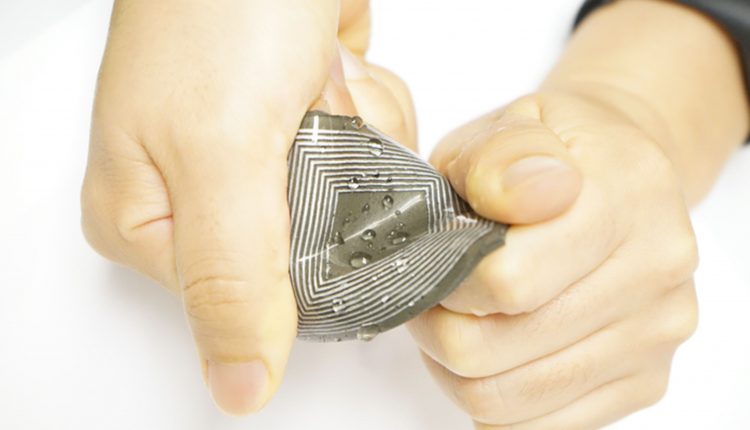
Bioengineers at UCLA’s Samueli School of Engineering invented a novel soft and flexible self-powered bioelectronic device that converts human body motions into electricity that could be used to power wearable and implantable diagnostic sensors.
Using the magnetoelastic effect, the change of how much a material is magnetized when tiny magnets are constantly pushed together and pulled apart by mechanical pressure, can exist in a soft and flexible system, not just in a rigid one. The researchers used microscopic magnets dispersed in a paper-thin silicone matrix to generate a magnetic field that changes in strength as the matrix undulated. As the magnetic field’s strength shifts, electricity is generated. The research is published in Nature Materials.
Jun Chen and his team built a small, flexible magnetoelastic generator from a platinum-catalyzed silicone polymer matrix and neodymium-iron-boron nanomagnets. They affixed it to a subject’s elbow with a soft, stretchy silicone band. They observed a magnetoelastic effect 4x greater than similarly sized setups with rigid metal alloys. The device generated electrical currents of 4.27 milliamperes per square centimeter, which is 10,000x better than comparable technology.
There have been ongoing efforts to make wearable generators that harvest energy from human body movements to power sensors and other devices. However, rigid metal alloys with magnetoelastic effect do not bend sufficiently to compress against the skin and generate meaningful levels of power for viable applications. Other devices that rely on static electricity tend not to generate enough energy.
The UCLA team’s novel wearable magnetoelastic generators, however, tested well even after being soaked in artificial perspiration for a week. A patent has been filed by the UCLA Technology Development Group.
Original Release: Eureka Alert
